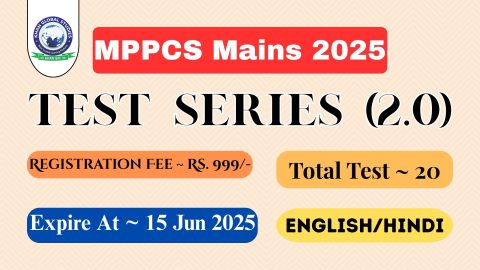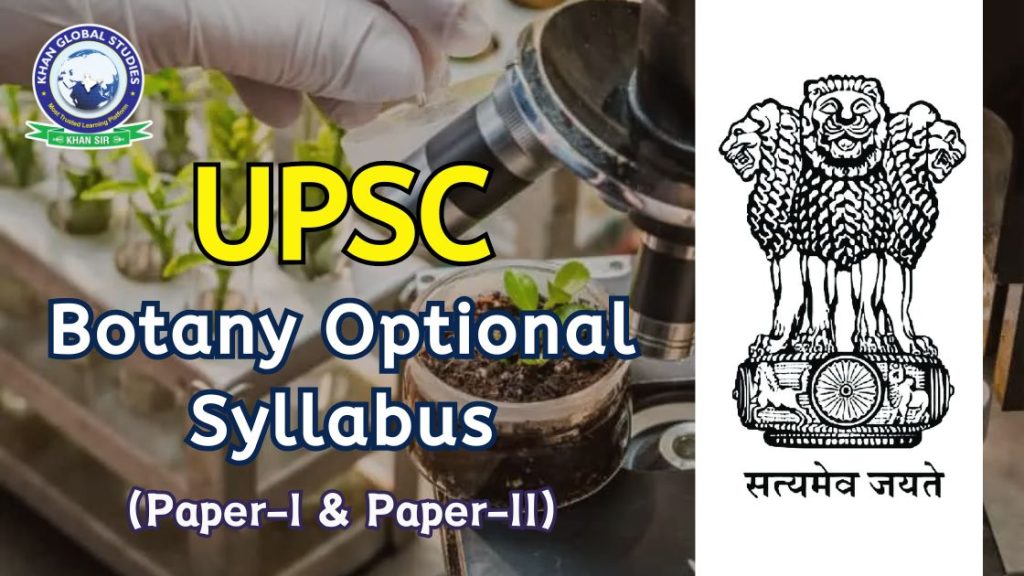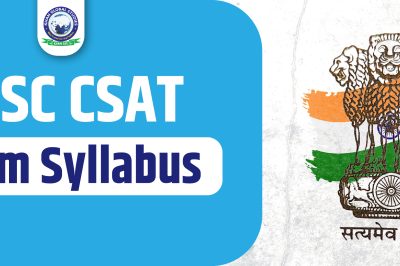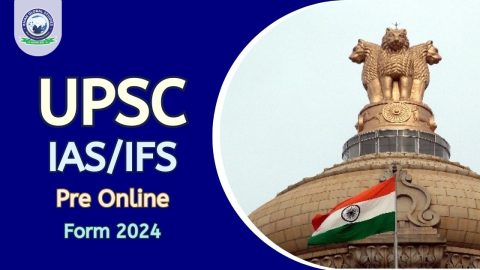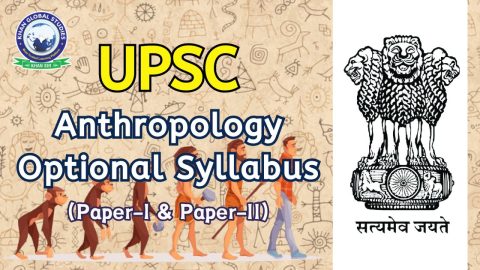The UPSC Optional Syllabus of Botany consists of two papers, Paper I and Paper II, each carrying a weightage of 250 marks. Both the papers are divided into different sections, and candidates have to choose one subject from each section. Let us look into the details of each paper.
UPSC Botany Optional Syllabus
The UPSC Botany syllabus additionally highlights plant ecology, which explores the relationships between plants and their environment. It covers plant genetics and breeding, providing information about hereditary traits and ways to improve crop plants. The botany syllabus for UPSC also includes Plant Biotechnology, where you will learn about the application of biotechnology techniques in plant science.
| UPSC Botany Syllabus | Important Topics |
| Paper I | Microbiology and Plant Pathology Cryptogams Phanerogams Plant Resource Development Morphogenesis |
| Paper II | Cell Biology Genetics, Molecular Biology and Evolution Plant Breeding, Biotechnology and Biostatistics Physiology and Biochemistry Ecology and Plant Geography |
UPSC Botany Optional Syllabus for Paper I
1. Microbiology and Plant Pathology
Structure and reproduction/multiplication of viruses, viroids, bacteria, fungi and mycoplasma; Applications of microbiology in agriculture, industry, medicine and in control of soil and water pollution; Prion and Prion hypothesis. Important crop diseases caused by viruses, bacteria, mycoplasma, fungi and nematodes; Modes of infection and dissemination; Molecular basis of infection and disease resistance/defence; Physiology of parasitism and control measures. Fungal toxins. Modelling and disease forecasting; Plant quarantine.
2. Cryptogams
Algae, fungi, lichens, bryophytes, pteridophytes-structure and reproduction from evolutionary viewpoint; Distribution of Cryptogams in India and their ecological and economic importance.
3. Phanerogams
- Gymnosperms : Concept of Progymnosperms. Classification and distribution of gymnosperms. Salient features of Cycadales, Ginkgoales, Coniferales and Gnetales, their structure and reproduction. A general account of Cycadofilicales, Bennettitales and Cordiaitailes; Geological time scale; Type of fossils and their study techniques.
- Angiosperms: Systematics, anatomy, embryology, palynology and phylogeny.
- Taxonomic hierarchy; International Code of Botanical Nomenclature; Numerical taxonomy and chemotaxonomy; Evidence from anatomy, embryology and palynology.
- Origin and evolution of angiosperms; Comparative account of various systems of classification of angiosperms; Study of angiospermic families— Mangnoliaceae, Ranunculaceae, Brassicaceae, Rosaceae, Fabaceae, Euphorbiaceae, Malvaceae, Dipterocarpaceae, Apiaceae, Asclepiadaceae, Verbenaceae, Solanaceae, Rubiaceae, Cucurbitaceae, Asteraceae, Poaceae, Arecaceae, Liliaceae, Musaceae and Orchidaceae.
- Stomata and their types; Glandular and non-glandular trichomes; Unusual secondary growth; Anatomy of C3 and C4 plants; Xylem and phloem differentiation; Wood anatomy.
- Development of male and female gametophytes, pollination, fertilization; Endosperm—its development and function. Patterns of embryo development; Polyembroyony, apomixes; Applications of palynology; Experimental embryology including pollen storage and test-tube fertilization.
4. Plant Resource Development
Domestication and introduction of plants; Origin of cultivated plants, Vavilov’s centres of origin. Plants as sources for food, fodder, fibres, spices, beverages, edible oils, drugs, narcotics, insecticides, timber, gums, resins and dyes; latex, cellulose, starch and its products; Perfumery; Importance of Ethnobotany in the Indian context; Energy plantations; Botanical Gardens and Herbaria.
5. Morphogenesis
Totipotency, polarity, symmetry and differentiation; Cell, tissue, organ and protoplast culture. Somatic hybrids and Cybrids; Micropropagation; Somaclonal variation and its applications; Pollen haploids, embryo rescue methods and their applications.
UPSC Botany Optional Syllabus for Paper I
1. Cell Biology
Techniques of cell biology. Prokaryotic and eukaryotic cells—structural and ultrastructural details; Structure and function of extracellular matrix (cell wall) and membranes-cell adhesion, membrane transport and vesicular transport; Structure and function of cell organelles (chloroplasts, mitochondria, ER, dictyosomes ribosomes, endosomes, lysosomes, peroxisomes; Cytoskeleton and microtubules; Nucleus, nucleolus, nuclear pore complex; Chromatin and nucleosome; Cell signalling and cell receptors; Signal transduction Mitosis and meiosis; molecular basis of cell cycle. Numerical and structural variations in chromosomes and their significance; Chromatin organization and packaging of the genome; Polytene chromosomes; B-chromosomes—structure, behaviour and significance.
2. Genetics, Molecular Biology and Evolution
Development of genetics, and gene versus allele concepts (Pseudoalleles); Quantitative genetics and multiple factors; Incomplete dominance, polygenic inheritance, multiple alleles; Linkage and crossing over of gene mapping including molecular maps (idea of mapping, function); Sex chromosomes and sex-linked inheritance; sex determination and molecular basis of sex differentiation; Mutations (biochemical and molecular basis); Cytoplasmic inheritance and cytoplasmic genes (including genetics of male sterility).
Structure and synthesis of nucleic acids and proteins; Genetic code and regulation of gene expression; Gene silencing; Multigene families; Organic evolution-evidences, mechanism and theories. Role of RNA in origin and evolution.
3. Plant Breeding, Biotechnology and Biostatistics
Methods of plant breeding—introduction, selection and hybridization (pedigree, backcross, mass selection, bulk method); Mutation, polyploidy, male sterility and heterosis breeding. Use of apomixes in plant breeding; DNA sequencing; Genetic engineering—methods of transfer of genes; Transgenic crops and biosafety aspects; Development and use of molecular markers in plant breeding; Tools and techniques— probe, southern blotting, DNA fingerprinting, PCR and FISH. Standard deviation and coefficient of variation (CV). Tests of significance (Z-test, t-test and chi-square tests). Probability and distributions (normal, binomial and Poisson). Correlation and regression.
4. Physiology and Biochemistry
Water relations, mineral nutrition and ion transport, mineral deficiencies. Photosynthesis— photochemical reactions, photophosphorylation and carbon fixation pathways; C3, C4 and CAM pathways; Mechanism of phloem transport, Respiration (anaerobic and aerobic, including fermentation)— electron transport chain and oxidative phosphorylation; Photorespiration; Chemiosmotic theory and ATP synthesis; Lipid metabolism; Nitrogen fixation and nitrogen metabolism. Enzymes, coenzymes; Energy transfer and energy conservation. Importance of secondary metabolites. Pigments as photoreceptors (plastidial pigments and phytochrome). Plant movements; Photoperiodism and flowering, vernalization, senescence; Growth substances—their chemical nature, role and applications in agri-horticulture; growth indices, growth movements. Stress physiology (heat, water, salinity, metal); Fruit and seed physiology. Dormancy, storage and germination of seed. Fruit ripening—its molecular basis and manipulation.
5. Ecology and Plant Geography
Concept of ecosystem; Ecological factors. Concepts and dynamics of community; Plant succession. Concepts of biosphere; Ecosystems; Conservation; Pollution and its control (including phytoremediation); Plant indicators; Environment (Protection) Act.
Forest types of India—‘Ecological and economic importance of forests, afforestation, deforestation and social forestry; Endangered plants, endemism IUCN categories, Red Data Books; Biodiversity and its conservation; Protected Area Network; Convention of Biological Diversity, Farmers’ Rights; and Intellectual Property Rights; Concept of Sustainable Development; Biogeochemical cycles. Global warming and climatic change; Invasive species; Environmental Impact Assessment; Phytogeographical regions of India.
Tips to Prepare for UPSC Botany Optional Syllabus
- Understanding the Syllabus: Before plunging into the preparation, it is important to have a clear understanding of the UPSC Botany Optional Syllabus. The curriculum covers a wide range of topics from plant taxonomy to ecology. Identify the key areas that need to be your focus to streamline your study approach.
- Making a Study Plan: A well-structured study plan is your blueprint to success. Allocate dedicated time to each subject, ensuring comprehensive coverage. This will avoid last-minute cramming and contribute to a deeper understanding of the subjects.
- Essential Study Materials: Choosing the right study material is paramount. Select the recommended books and use the online platform for a holistic learning experience. Stay updated with the latest publications and include them in your study routine.
- Effective Note Taking: Making concise and organized notes is an art. Develop effective note-taking strategies to summarize information without losing context. Your notes should serve as a quick reference during revision.
- Regular Revision: Revision is the key to retention. Make a revision schedule to revisit the topics from time to time. This reinforces your understanding and ensures that you retain the information effectively.
- Practice from Previous Years’ Question Papers: It is important to understand the exam pattern. Solve previous papers to become familiar with the format and identify areas where you need improvement. This practice will boost your confidence on the actual exam day.
- Time Management during the Exam: Effective time management is important during the examination. Develop a strategy for allocating time to each section, ensuring that you cover all the topics. Maintain composure and concentrate on the task at hand.
- Keeping up to date with Current Affairs: Be aware of current affairs, especially those related to Botany. UPSC exam often covers current topics, and staying informed will give you an edge during the exam.
- Mock Tests and Self-Assessment: Give mock tests regularly to simulate exam conditions. Evaluate your performance, identify areas for improvement, and adjust your study plan accordingly. Self-assessment is a valuable tool for continuous advancement.
